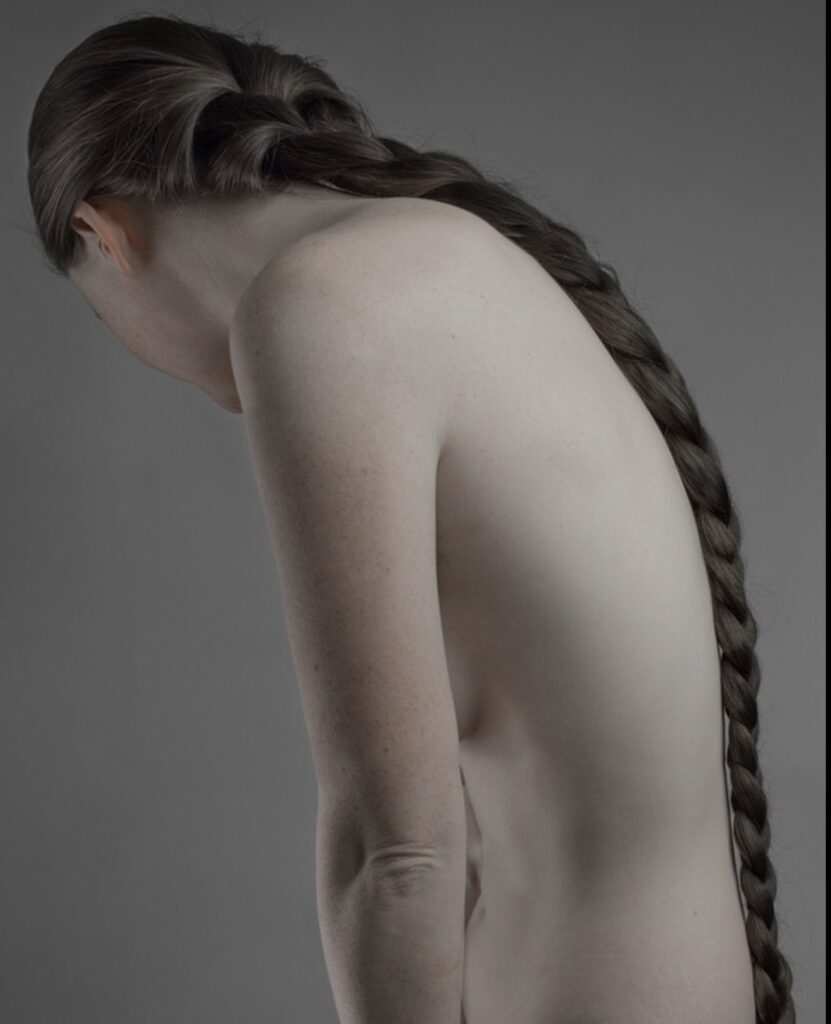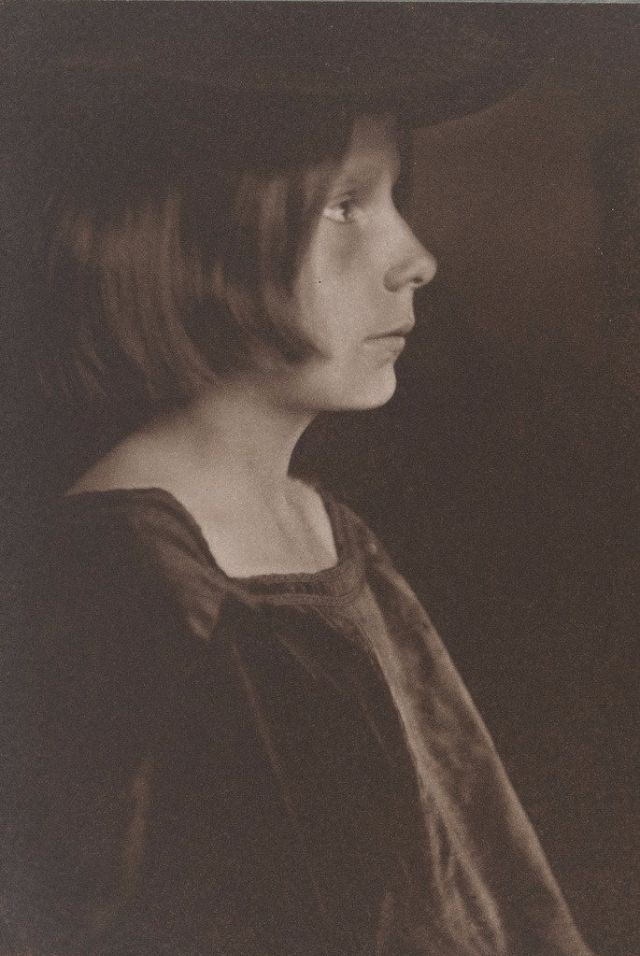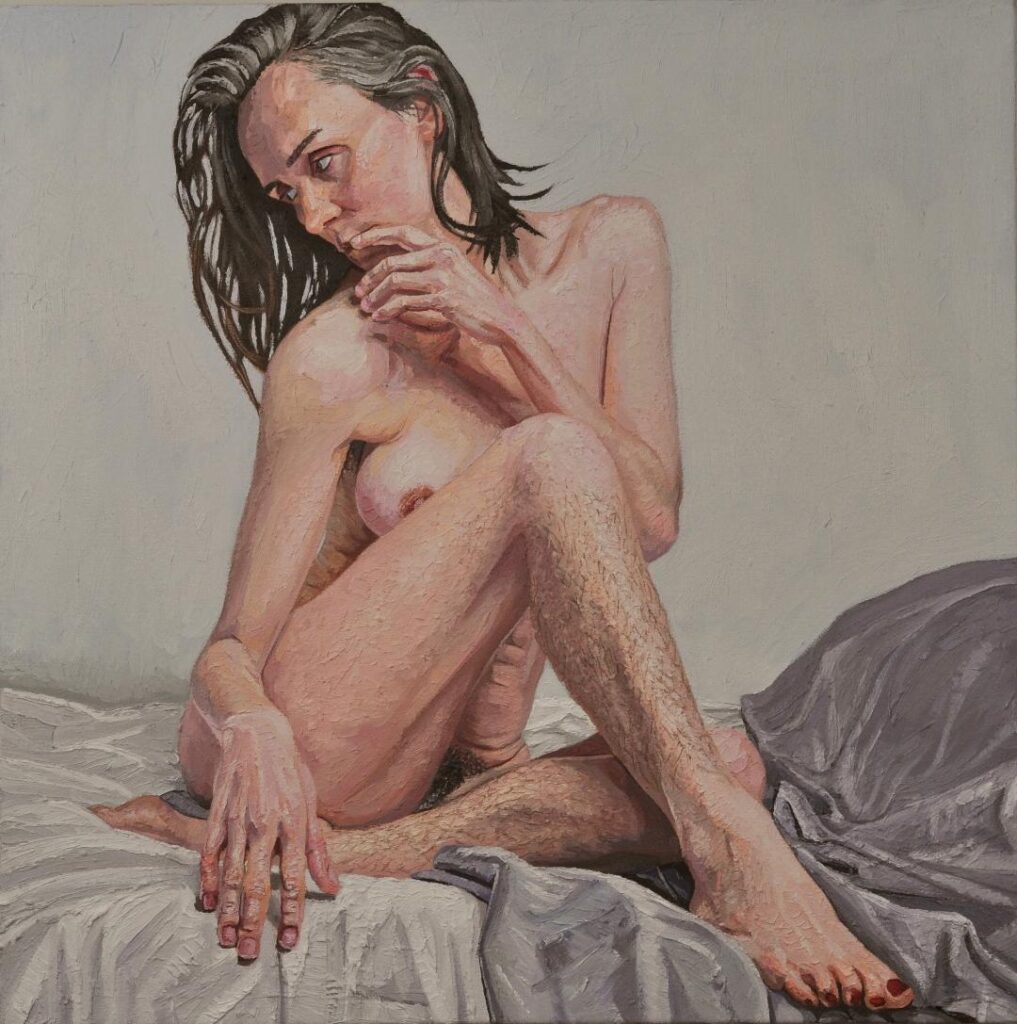Photographer Justyna Neyrng “spent much of her childhood playing with her father’s cameras and darkroom while roaming the forests of Chelmsford on the Czech border.”
The poetics of her childhood influenced Neyrng’s prolific emotive portraits. She composes images, documenting “something she feels rather than something she can see.”
.
Resources include the writings of John Humphrey, Naomi Rosenblum; Light Grey Artlab, Heist Gallery and Justyn Neyrng website, Peter Bustin (@peterbustinartist on IG)

Other Works Highlighted

Script: Welcome my Art Enthusiasts! On behalf of Bridgette Mayer and myself, we would like to thank everyone who participated in our Giveaway on Instagram. The winners include: Bridgette Mayer Book: The Art Cure: Amy Chaiklin Bridgette Mayer Book: The Modern Artist’s Way: Amy Scott Young Bridgette Mayer Book: ArtMBA Mindset Program: Sally Brown Art Girl Rising T-shirt: Jane De LaFordBeyond the Paint T-shirt: Shree Shauhan Congratulations to the winners! And now on to the show!
Episode 137: Justnya Neryng: Conveying Resonant Emotion in Portrait Photography. To be frank, I questioned over and over in mind where to lead your gaze, your looking experience in this episode celebrating the evocative photographs, portraits and nudes, landscapes, creative projects like “Childhood Lost,” by the female artist and fine arts photographer Justnya Neryng. They are all so compellingly and aesthetically and may I add technically beautiful, poignant and mesmerizing. I am drawn into all of them—I fall into the painterly landscape of the faces and the bodies and what surfaces for me is a mirror to the human experience, a glimpse into the sitter’s inner life. I see me reflected in her works, my pains, my joy, my vulnerability, an emotive reservoir that surfaces in the facial features and bodies of her sitters—so much depth within two dimensional works.
Like the Portrait of Fred: an elderly man, with a burly grey beard, his face is a tributary of creviced lines that lead your eyes across the ridge of his cheekbones, the crook of his elongated nose and the pool of his eyes framed by curved, deeply etched crescent moon shaped wrinkled lines, . His grey hair, sparse at his forehead, swoops down the back of his neck. We see his face in profile, his gaze looks out towards the right side of the frame, the beard, lush and soft is defined with textured swirling chaotic lines. There is a glint of light in his pale brown eyes, it is there my gaze settles, from behind that gleam we can see, we experience Fred and we can imagine with clarity, pieces of his long life in an aging, noble face.
What came to my mind initially—as I intuitively began to draw connections with the image of Fred, is a self-portrait by the Dutch master Rembrandt from 1659. It was on loan from the National Gallery in Washington DC, exhibited at the Wadsworth Athenaeum in Hartford, Connecticut in 2009. Like in the photograph Fred, Rembrandt is portrayed as an older man—this late work was painted when Rembrandt had suffered financial failure after many years of success. His spacious house and other possessions had been auctioned the previous year to satisfy creditors. Rembrandt’s deep set eyes “bore into my gaze” expressing wisdom gained from his life experiences. There are thick creases beneath those eyes and the jowls of his neck, his face illuminated by a soft light is formed through thickly applied paint, and the texture is uneven. From his fashionable hat brim sprouts graying curls. Overall there is a heavy, brooding quality to the work. In the photograph of Fred I do not know the back story of his life, there is just the image. The reason I connect Fred with Rembrandt’s portrait is one there is a painterly quality in Neyrng’s portraits, the texture of their weathered faces, hair, etc —both are faithful representations of the sitters, though through two mediums, paint and photograph. In the Rembrandt we see the weight of despair, the way dark and brooding events, this includes the death of his wife, his son Titus who died from the plague at 26, how those events compress and then surface in his face, his body. In the portrait Fred, I see the evolution of an aging man who has retained a sense of joy, I imagine he lived perhaps on the edge of conformity and was a bit of rebel…That perceived rebellious spirit is imbued in his straggly yet coiffed beard. Like the Dutch master Rembrandt, Neyrng gives us “the large and small insights into the broad human picture.” (quote from the writer John Humphrey)
“Photography—a combination of lens, a shutter, illumination, and a flat surface coated with chemicals sensitive to light—was invented in the early 1800s by people looking for an exact and lasting record of their surroundings. With this new technique (or combination of techniques), they produced in a short time images that were more real and detailed than painters could produce in weeks and months of effort.
Women have made photography a field of her own. From the text “A History of Women Photographers” authored by Naomi Rosenblum—in the late 19th century and into the early 20th century, there was a market for “portraits of the affluent upper-class” Taking portraits in the home of the client instead of the studio became an acceptable role for women photographers—it was women who evoked individual character through pose and lighting, creating individualized portraits with an artistic effect—this countered the studio portraits of the time that “contentedly used the same painted backdrops, damask swags and paper mache props with democratic impartiality.” The photographer Frances Benjamin Johnston observed “the professional everywhere is reaching out for something new.” Portraiture urged us to “see the difference between nature and art” Neyrng’s portraits echo the same poetic qualities of early portraiture.
One portrait photographer that really resonated with me is Gertrude Kasebier. She proposed in her portraits of society people, artists and Native Americans, to “make likenesses that are biographies, to put into each photograph…temperament, soul, humanity.” In her artistic process, Kasebier, “ studied the sitter, suggested the proper costumes, posed the sitter, adjusted the lighting to achieve special effects—and she drew upon her knowledge of historical painting styles gained during her studies at Pratt Institute, using compositional strategies and lighting effects of well-known old masters. Like in the photograph c. 1897, Flora (alternatively titled Portrait Study, The Velvet Mantle, and Florentine Boy) We see, against a liquid black background, the profile of a young boy, about 12 years—his hair is longer, straight, cut in a diagonal to the nape of his neck. He wears a velvet shirt with square collar and we can see the brim of a velvet hat—his aquiline features, the nose and delicate chin, his eyes, there is a soft, innocent beauty.
I see this same ethereal painterly quality in Neyrng’s work like in the portrait of Fred. In another portrait of Fred, Neyrng exposes the viewer to the elderly man’s slim back; the shoulder blades jut out forming triangular shapes; his grey hair cascacade down to the base of his neck like a downpour from a waterfall. The profile of his face is in shadow. In Neyrng’s collaboration with the artist and model Francesca Cluney, a series of color portraits display Cluney’s nude body. In one image we see the back of her head, the left arm is straight along the side of her bent upper torso, the surface of her skin is creamy smooth; her straight hair is formed into one long, thick braid, it is placed along the spine of her gently sloping back. It creates this interesting juxtaposition of hair and spine.
Another particular interest of Neyrng is the body. In her series, “The Nude Stripped Bare,” Neyrng turns the camera lens on herself, we see “multiple views of Neyrng completely nude against a liquid black background, the direct light enhances the sculptural curves and forms of her lithe body. My favorite image in this series is a focus on Neyrng’s back side. The background and floor beneath her is black; our eyes travel from the nape of her neck, her face is not exposed, just some tendrils of her hair, her backbone is defined, creating a line down and across the curve of her hips, her long legs are crossed exposing the back of her feet, toes are pointed, her left had rests on the curve of her waist. Her skin the texture is like marble—it is smooth, what we see is simply the body beautiful, like a Baroque painting, the body mysteriously lit, contrasts with the deep, dark background.
In an interview with Light Grey Artlab, Neyrng said she doesn’t care how things look. She documents something she feels rather than something she can see. I agree with Neyrng, but I also assert, this woman photographer knows something and I say that facetiously, about composition, about arrangement. I do not see a person, a body, I visually seep into the work, and the forms meld into my senses like the swell of water drops absorbing into a piece of paper. It is an immersive experience.
Neyrng seeks the beauty and resonant power in the faces and figures she photographs. Classical Greek sculpture sought power and beauty by following the rules of symmetry—perfection can clearly be seen. Neyrng through the ordinary figure, like Fred’s like Francesca’s, like in her own self portraits she elevates their beauty, portrayals of unconventional perfection through the individuality of her sitters. Searing through the images is an emotive narrative, you have to experience the images first hand to see oh the stories Neyrng’s portraits tell. Embedded in the stories of her sitters expressed in Neyrng’s portraits, is autobiographical aspects. Born in 1981 in Poland, “Neyrng spent much of her childhood playing with her father’s cameras and dark room while roaming the forests of Chelmsko on the Czech boarder. Her works seem to carry the dark spirit of the forest from her childhood—and she expresses this in a Childhood Lost, a self-portrait series in a different body, in that of her daughter Nell. Using traditional drawing and paintings as inspiration creates meticulous personas through costumes and props. Neyrng describes them “self portraits just in a different body. Exploring the nature of portraiture and memory, I am producing a series of portraits that evoke characters that populate the world we know as childhood—a court of characters from myths and dreams.
I learned about Justyna Neyrng through the figural painter Peter Bustin. Bustin is very near and dear to my heart. He has been a guest on my show, episode 113—we have spoken on the phone and engaged in conversations of our shared enthusiasm of the nude figure and the female gaze. He recently collaborated with Neyrng in portrayals of the photographer by Bustin. I would be remiss if I did not share with you one of two works of Neyrng. She is composed on white drapery arranged beneath her body. Her face is in profile; her hair is bound in a loosely formed bun with sweeps of grey forming gentle waves in the light brown hair. Half sitting, half reclining she balances her body on her left hip, her breasts and unshaved groin, the taut folds in her abdomen are tipped towards our view—it is this area of her body that is the centerpiece. Her legs are crossed, the right leg folds behind her body, the right one, bent at the knee, her foot rests on her bent knee, it appears slightly tense—her toe nails are painted in a ruby red. Beneath her arms, down the landscape of her calves is engulfed with bristles of body hair, we experience in Neyring’s body, all of its textures sculpted in thick layers of paint.
As in Neyrng’s photographs, her portraits, we see the unexpected in the ordinary beauty of the human figure, the face—they are mirrors to vulnerability, beauty but also isolation, all captured on neutral backgrounds—Neyrng as Heist Gallery describes is a “skilled craftsman and master of art, who manages through her lens to make us feel what she feels, to go deep within our skin and resonate in our minds.” Thank you for listening. Resources for this episode are listed at my website beyondthepaint.net.

